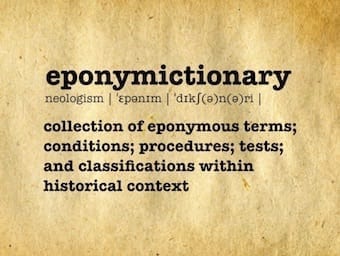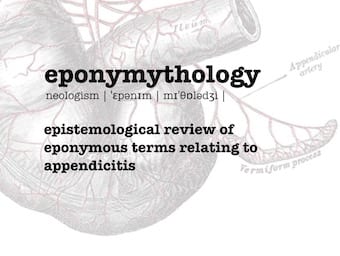
Tuohy Needle
Tuohy Needle with Huber point: Non-coring type needle with a transversely curved wall and side hole giving it a long, sharp, curved tip. EB Tuohy (1946)

Tuohy Needle with Huber point: Non-coring type needle with a transversely curved wall and side hole giving it a long, sharp, curved tip. EB Tuohy (1946)

APGAR scoring system is a comprehensive screening tool which should be used to assess newborns at birth. Virginia Apgar 1953

The Miller laryngoscope is a straight blade designed to obtain a view of the vocal cords by directly lifting the epiglottis. It has useful application in ‘floppy’ airways making it popular within paediatric anaesthesia

Faget Sign: Relative bradycardia in association with fever (Temperature-pulse dissociation). Originally described by Jean-Charles Faget in patients with yellow fever (1859)

Liebermeister rule: Defining the relationship between pulse frequency and body temperature in fever. Carl von Liebermeister (1833 - 1901)

Peyronie disease refers to plaques (flat scar tissue) forming under the skin of the penis. The plaques can be palpated through the skin; are often painful; and can cause the penis to bend, shorten or become indented during erections.

Thomas test is a physical examination test, first described in 1875 by the Welsh bonesetter Hugh Owen Thomas (1834–1891)

The Alvarado score is a 10 point score for predicting acute appendicitis (mnemonic MANTRELS). Alfredo Alvarado in 1986

1933 – Kartagener described the syndrome of situs inversus, chronic rhinosinusitis, and chronic bronchitis with bronchiectasis

Sutton's law: When making a diagnosis one should first consider the obvious, and conduct tests which could confirm/ rule out the most likely diagnosis.

Osler node: Painful, red, raised lesions usually found on the palms and soles. Caused by immune complex deposition and the resulting inflammatory response.

Peter James Kerley first described horizontal lines that he postulated to be peri-vascular lymphatics in patients with mitral stenosis and left ventricular failure